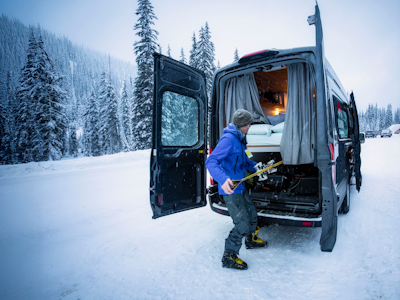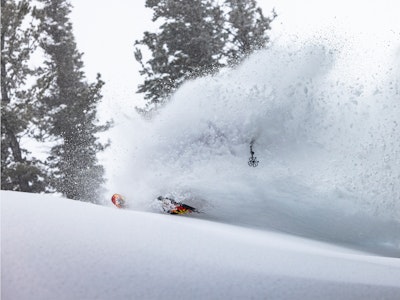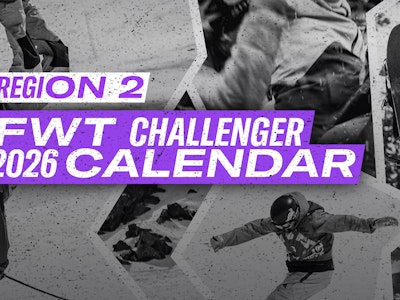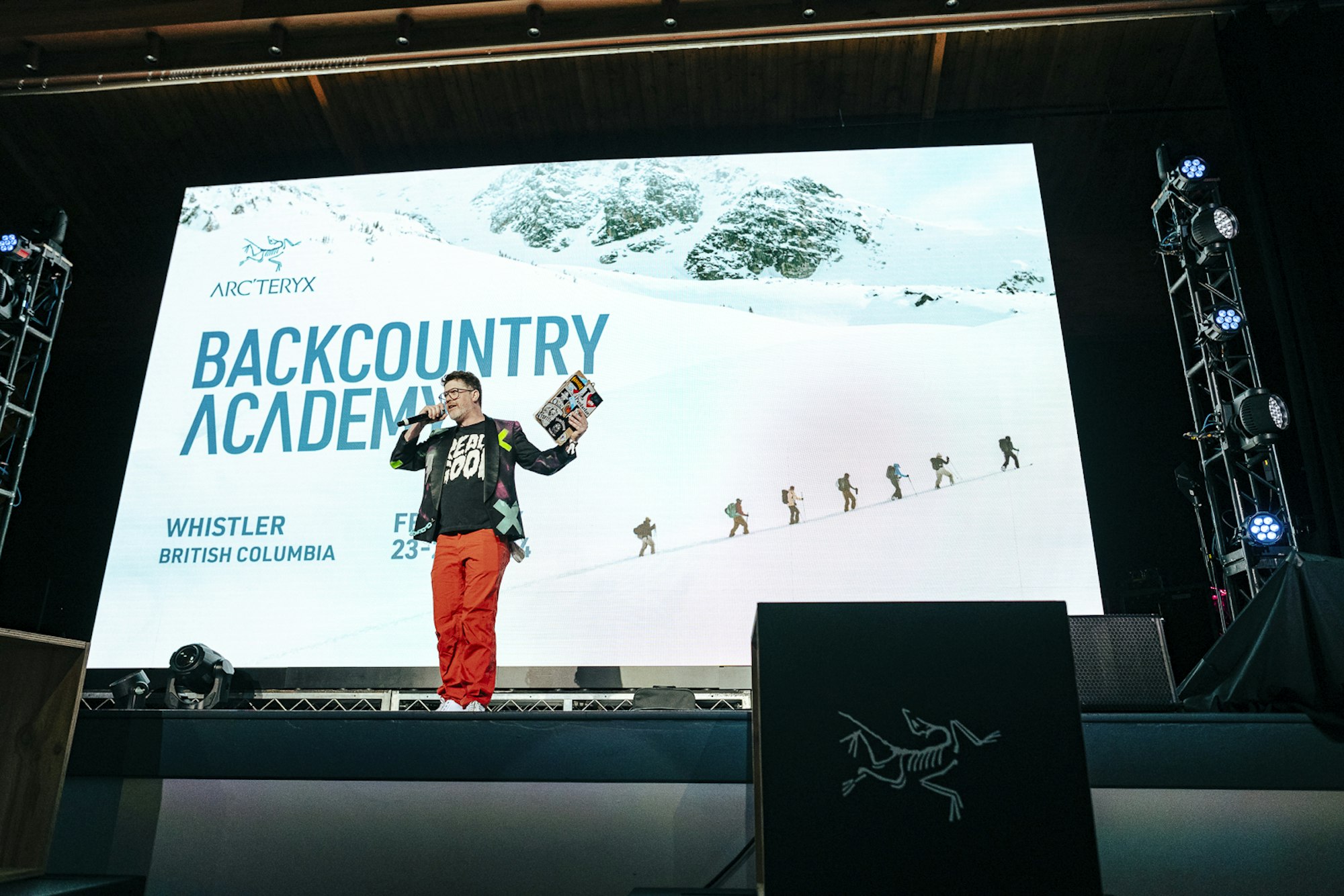Featured Image: Kyle Gibson
It’s getting a little western on the skin track. It was just short of noon, and the weather had quickly changed from bluebird to a classic coastal cloud cover with some significantly hefty wind. Our group is nearing the top of our second transition of the day as we traverse our way toward Corona Bowl, a 2,200 ft descent nestled just outside the boundary of Blackcomb, BC. Renowned alpinist Greg Hill stomps out the snow in front of us to make it a bit easier to get across a steeper crux.
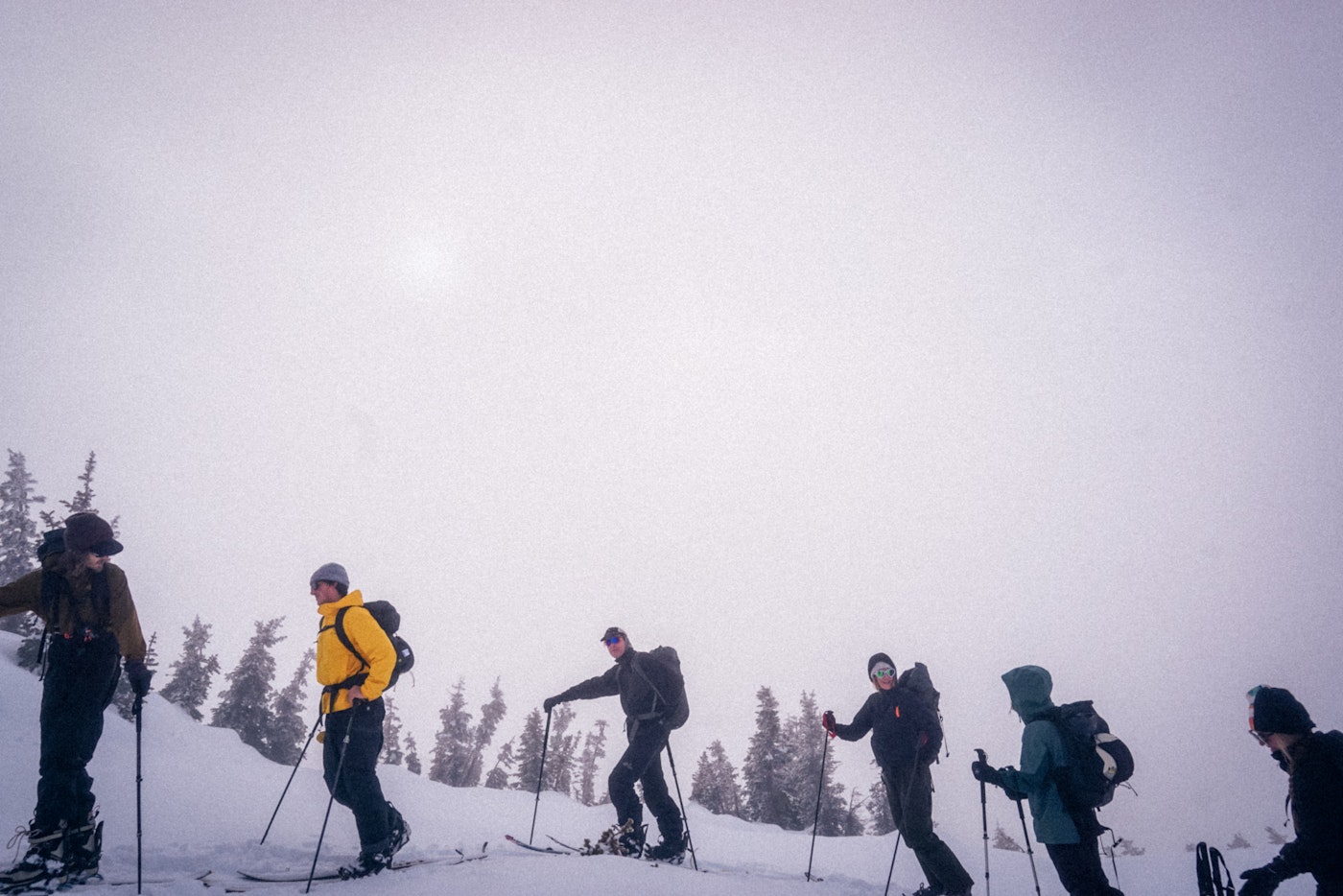
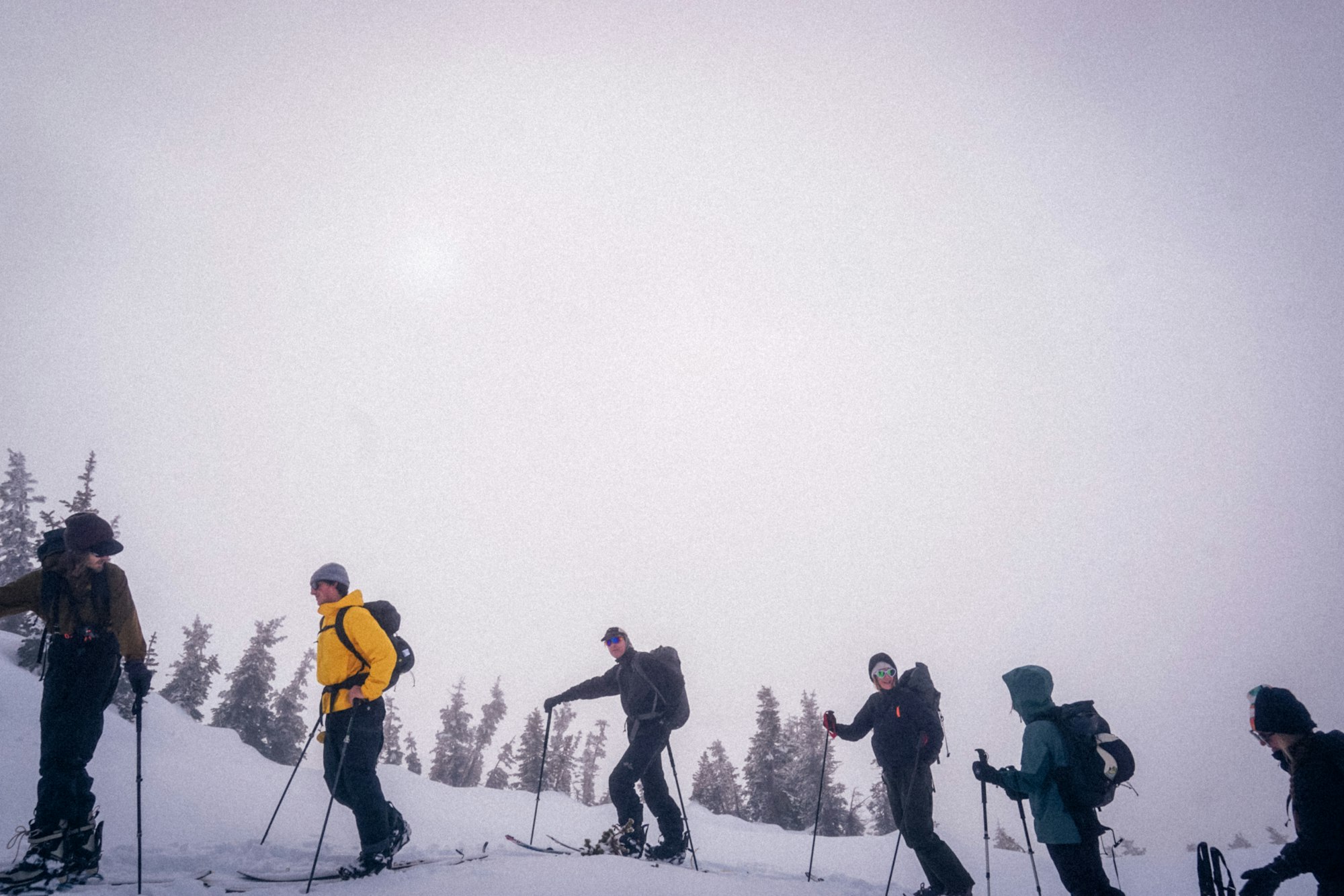
PHOTO: Jenna Mahaffie
I’m wondering about a few things at this moment; the first is how I probably look a little like Frozone from the Incredibles with my hood pulled up high and tight, and the second thought is simply, “Don’t slip.” Just behind me is competitive snowboarder and founding member of Indigenous Women Outdoors, Sandy Ward, who gives me a characteristically bright smile and a little chuckle even in the midst of a heavy squall. “Did you know? The mountains don’t call Greg [Hill]. He calls the mountains, and they go.”
I laugh, and the wind dies down for a moment. I’ve always thought backcountry travel has a way of isolating the strong from the strongest, which isn’t wrong. But at that particular moment, it felt like a level playing field. Just me and my new friends, doing what makes us happy.
Someone asked me recently if I ever get sick of skiing. My answer is rooted in so much of the reason behind the Arc’teryx Backcountry Academy: skiing isn’t really ever just about skiing.
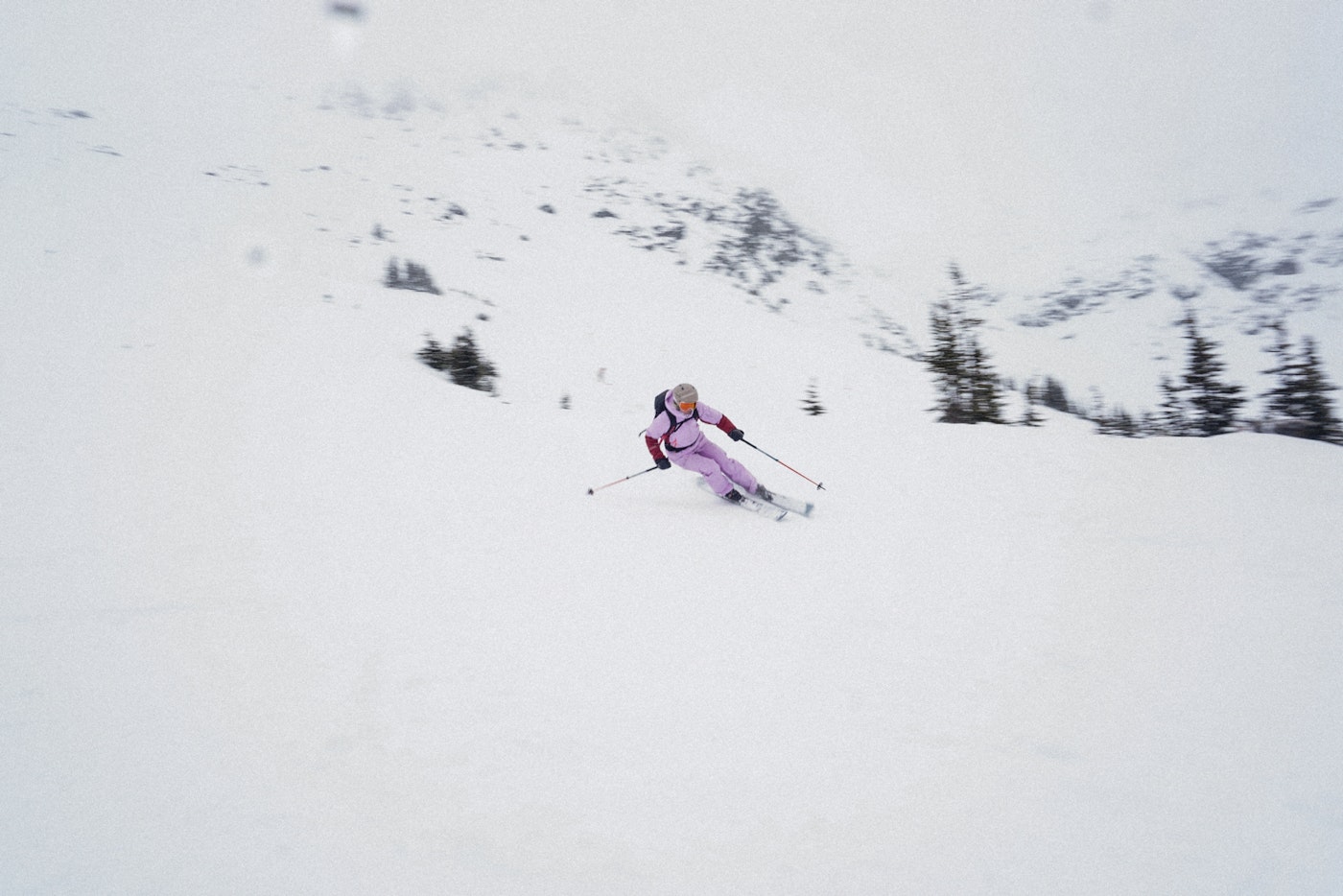
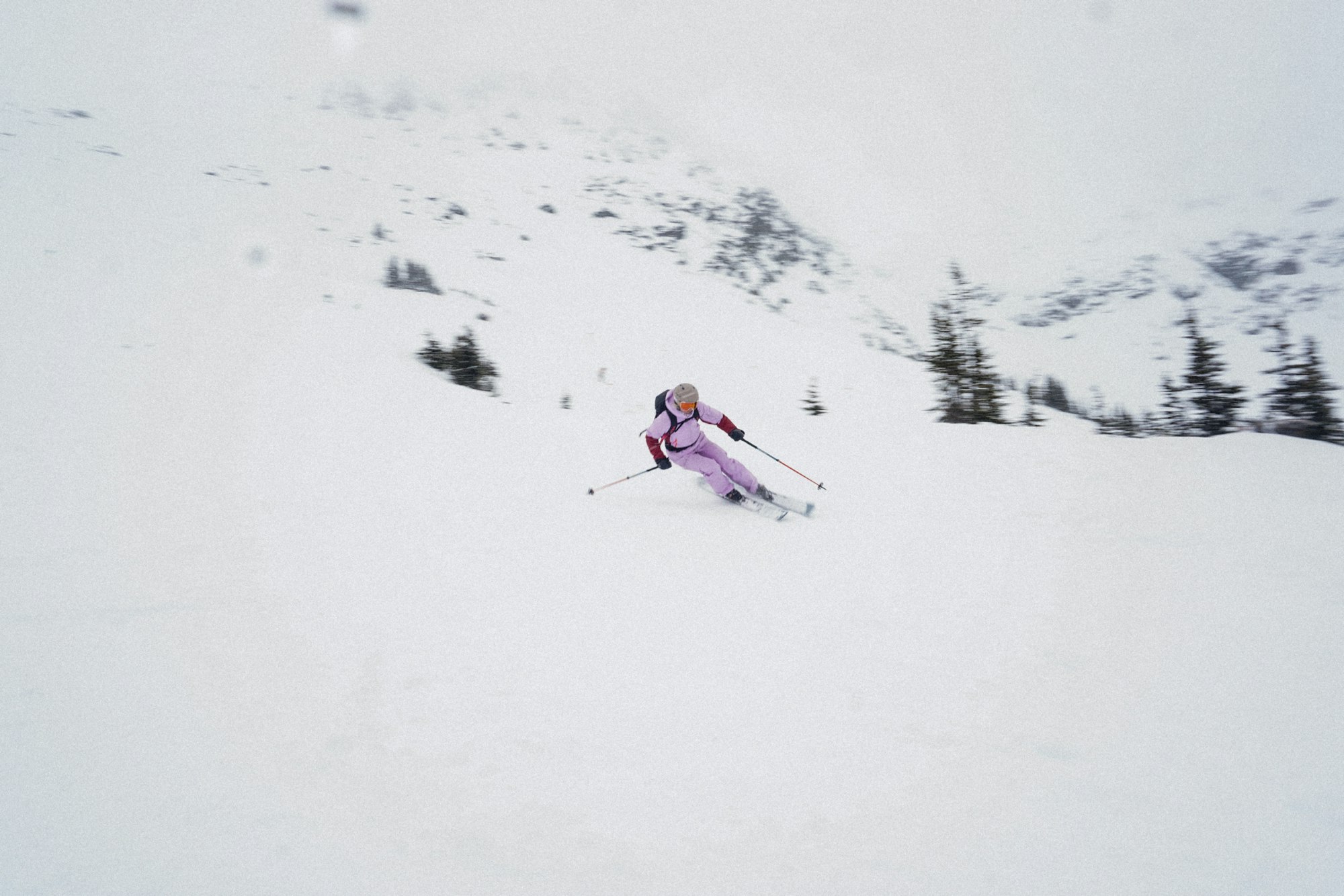
SKIER: Lucy Sackbaum | PHOTO: Jenna Mahaffie
In Arc’teryx’s words, “Academies are the pinnacle expression of the brand in its truest form.” By immersing participants in the environments they design gear for, Arc’teryx achieves both the walk and the talk. Over 60 clinics are offered over the course of the three-day event, with each day ending in a celebration of art, indigenous culture, music and community.
The Arc’teryx clinics go on sale to the general public every year and sell out quickly. When I asked the other folks in our crew how they found out about the event and why they wanted to participate, they all responded resoundingly with, “Why Not?” And with my first Backcountry Academy in the books, I know it’s much more than a good time. It’s an event that not only has great skiing, masterclasses from pros and educational seminars, but it’s also a major community builder. To be able to come together in one of the most beautiful places in the world breathes the idea of connectivity throughout the event.
The events that preceded day one with Hill had already been an exemplary force in the authenticity behind the brand. Rewind two days prior, and we are two hours south, touring the north Vancouver Headquarters and Design Center (DC) with Chief Creative Officer Katie Becker. The DC is not some immaculate studio, it’s more like a true creative workshop. There are mannequins lining all the desks, scrap fabric, finishes, zippers and piles of product. Look to one side, and there’s an entire in-house sewing team, while new products and prototypes line the other – I run my hand across a tote made entirely from scrap Gore-Tex and wonder if it could be my grocery bag one day. Katie says something that I’ve heard throughout my own creative career as a designer and writer: if you took the logo off, would you know it was Arc’teryx? It’s something all brands strive for, but one that I think Arc’teryx is slowly achieving. Simplicity, clean lines and the DNA of many, many days of testing in the Coast Mountains are the secret recipe. The design center is there to prove it.
Our tour sets a precedent for the rest of the Backcountry Academy: distill the chaos until you’ve reached the underlying core of what really matters. In that center lies an enduring veracity that underscores the reasons we all look to the mountains.
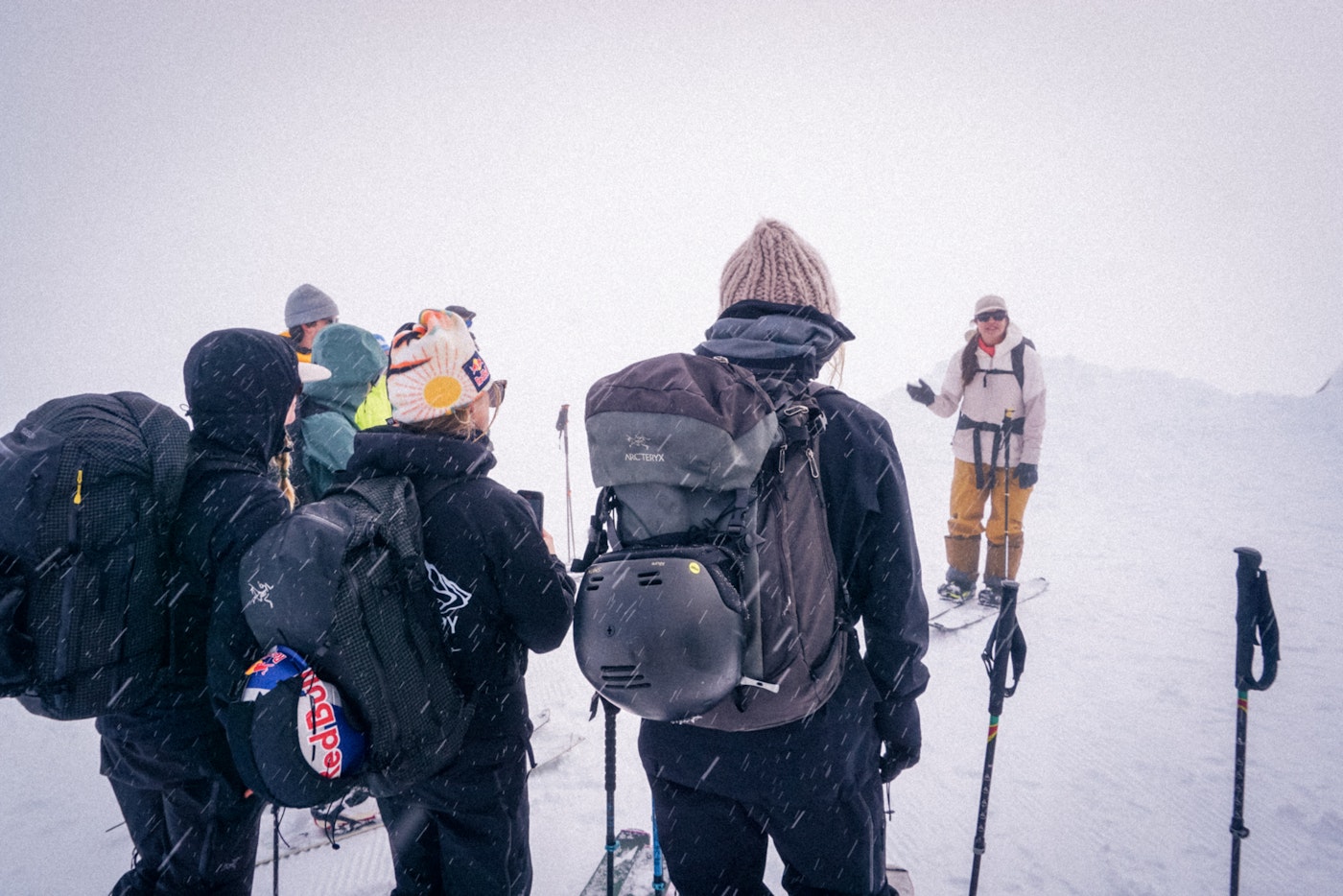
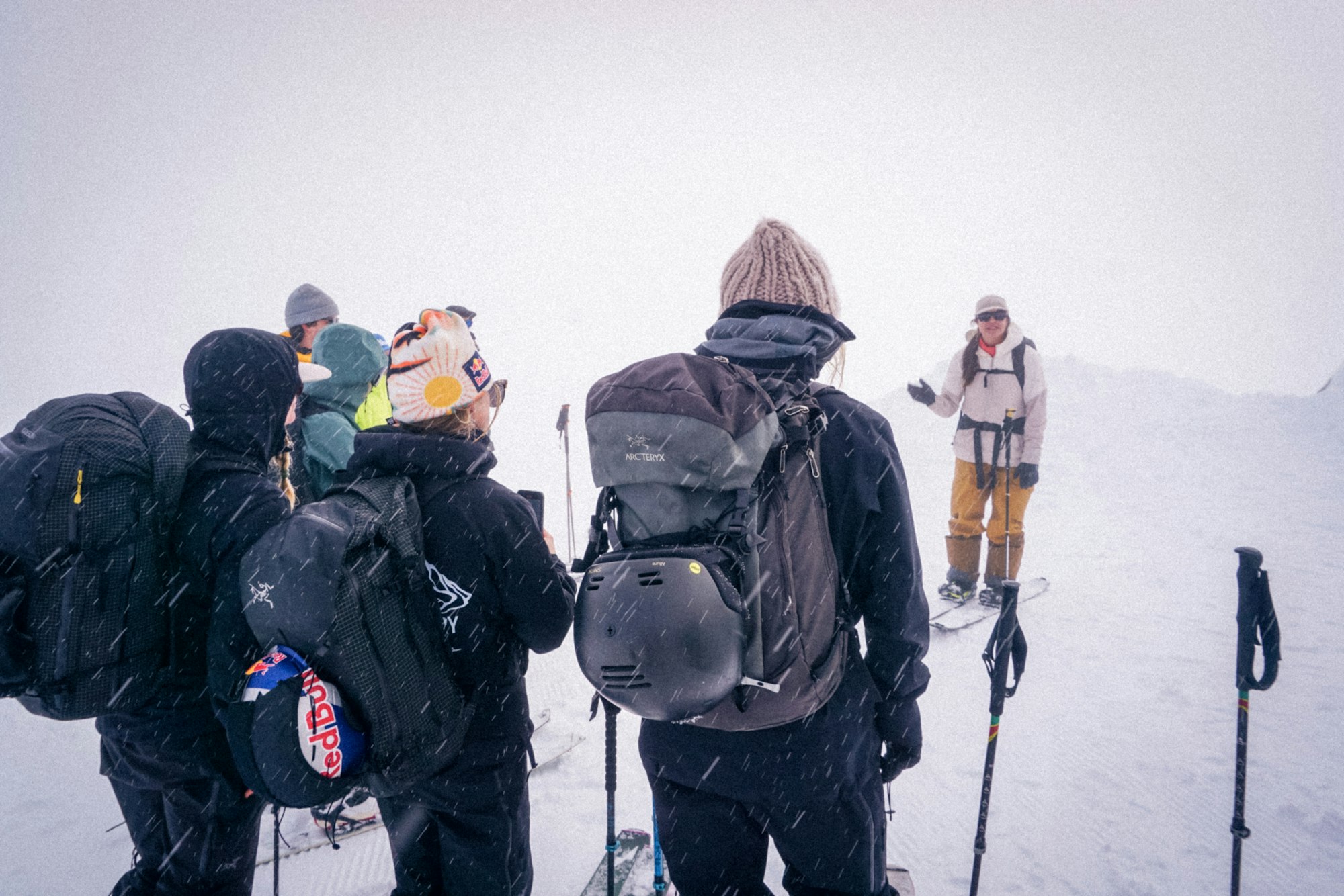
Sandy Ward shares stories of the place names given by her nation Lil’wat. | PHOTO: Jenna Mahaffie
The day before the official clinics start, we head for a tour up Whistler Mountain with Ward and many others from the Arc’teryx team. Ward is a proud member of the Lil’wat nation and has dedicated much of her time to helping indigenous youth in her nation access the outdoors. Though the mountains around us are socked in, she shares stories of the place names given by her nation to the peaks and valleys around us, explaining that much of the Lil’wat language is based upon sound and emotion.
We listen quietly and intently. I am thinking about the conversation we got to have just one day prior with Lisa Wilcox, Arc’teryx’s first Chief Truth and Reconciliation Officer. Wilcox explained the brand’s pledge to listen, learn, care and create safe spaces for the indigenous peoples that occupied the land first. It’s a special way to kick off the week, and as Ward would later tell me, it’s the brands’ support of the organizations she cares about that matters the most. She is a founding member of Indigenous Women Outdoors (IWO) and also a coach for the Indigenous Life Sport Academy, both of which were supported in films and clinics throughout the weekend. Later in the week, we watched Ward’s film “Slides on the Mountain,” which follows two teenage brothers from the Lil’wat nation as they set off to gain the skills needed to ski the legendary Pemberton peak, Mount Currie. It was met with a standing ovation.
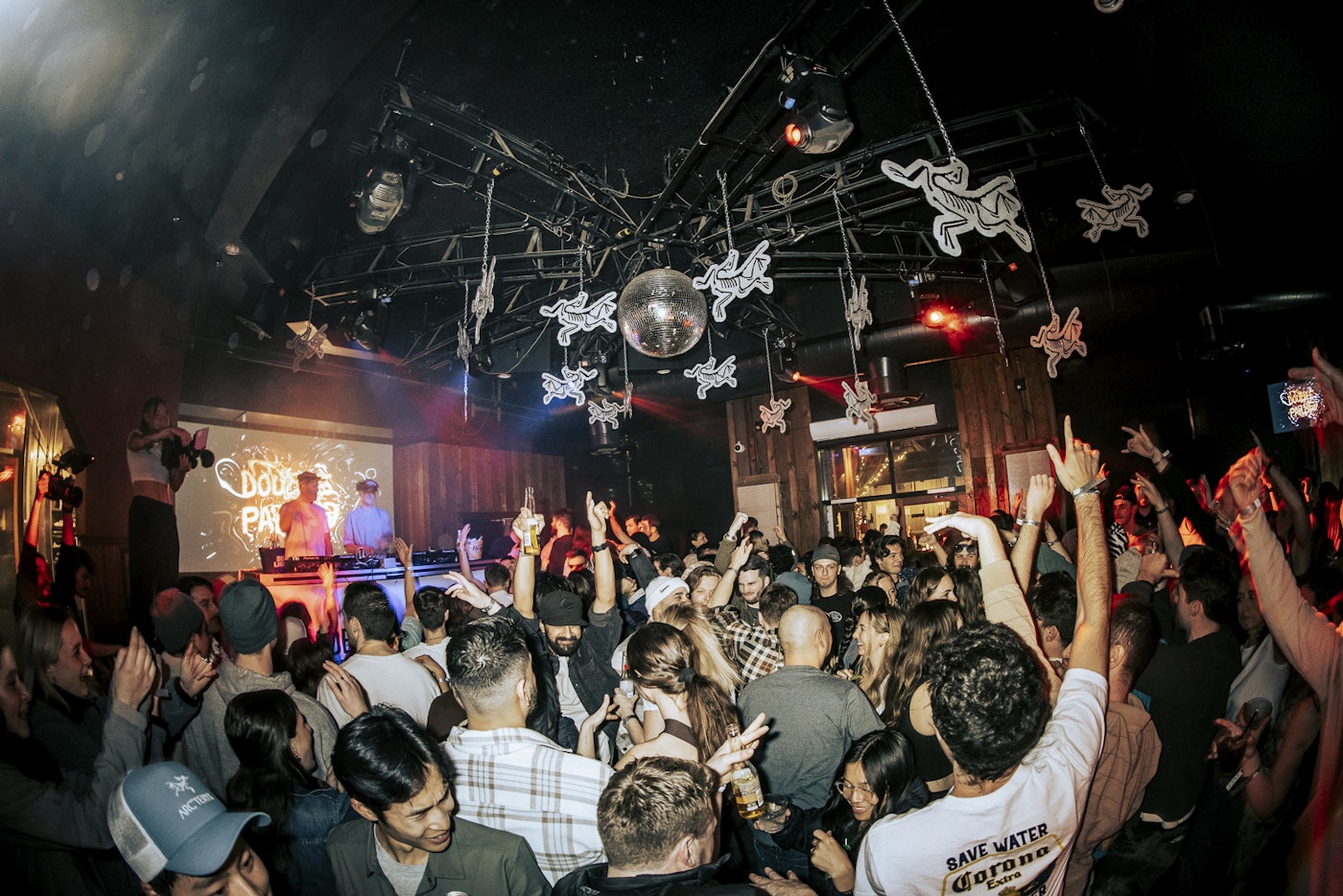
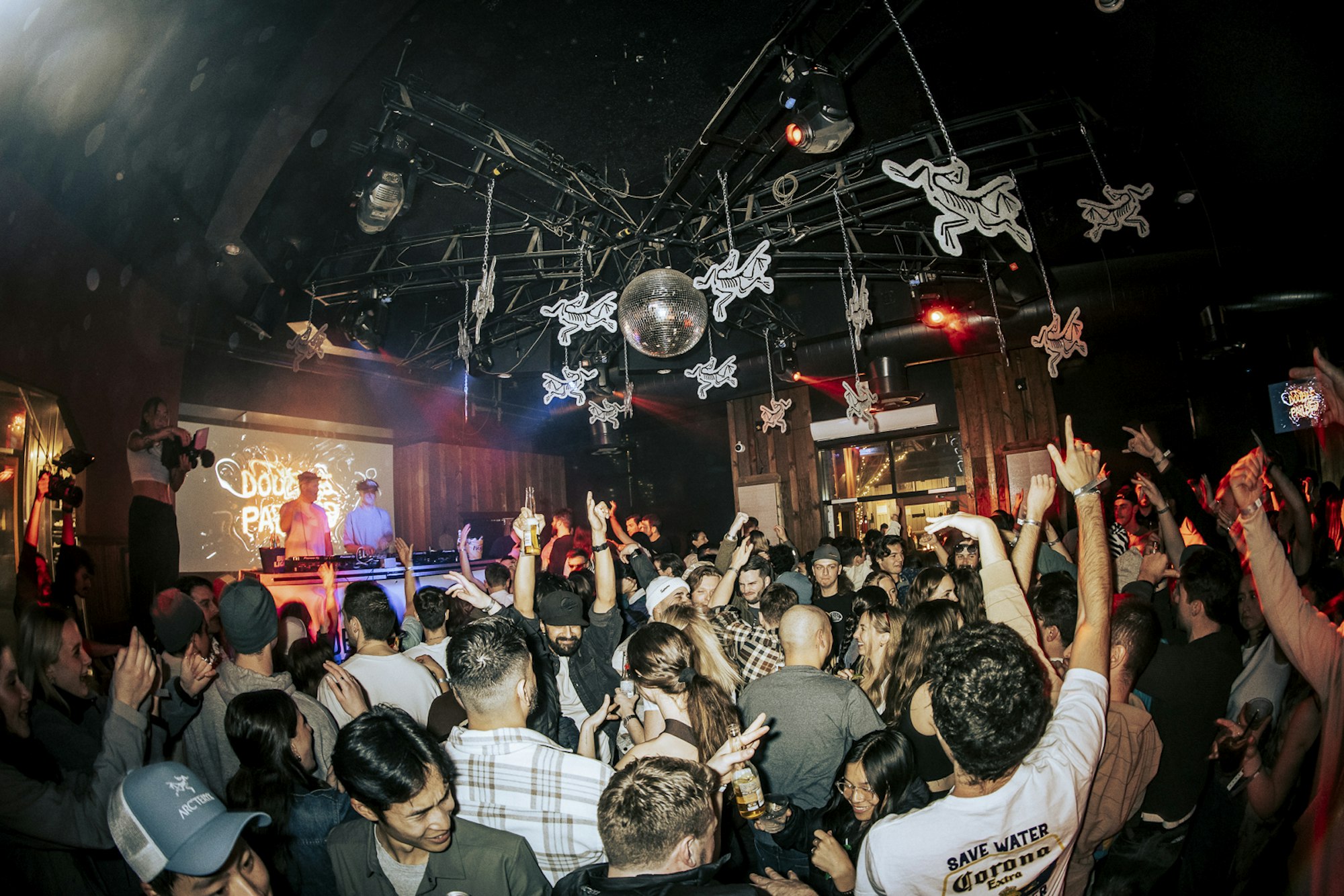
PHOTO: Kyle Gibson
In the evenings, after full days of clinics and skiing, we capped the night with film screenings and live music. The samplings were a wide variety, covering topics like native land and women in skiing—each showcasing a deeper story than merely sick skiing. After the showings, Arc’teryx brought in live music for some dancing and fun. They really know how to throw a party.
The rest of the weekend proved to be one of deep connection. I sat next to athletes Lucy Sackbauer and Izzy Lynch at dinner one night, rotating dinner conversation around what happens after you reach your “euphoric” goal, be it landing the cover shot on a magazine, an Olympic gold medal or becoming a mom. I took a photo clinic with Arc’teryx’s senior photographer Angela Percival, who spoke about the connection between her photo career and the incredible places and people she’s gotten to meet along the way. Tonje Kvivik, Arc’teryx’s newest addition to their athlete roster, spoke on her trajectory from showing phone edits in crowded bars with her best friends to being one of the industry’s standout stars.
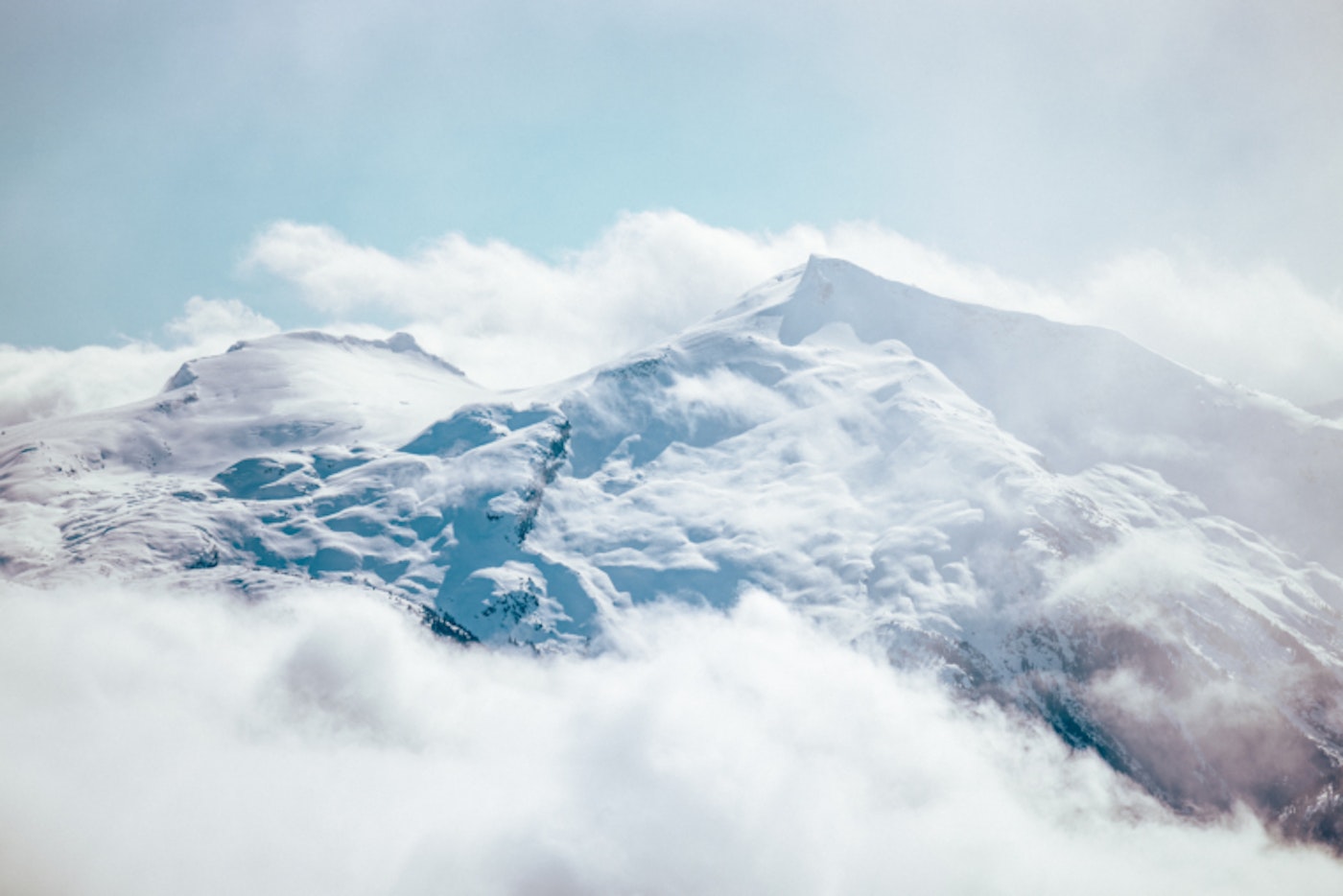
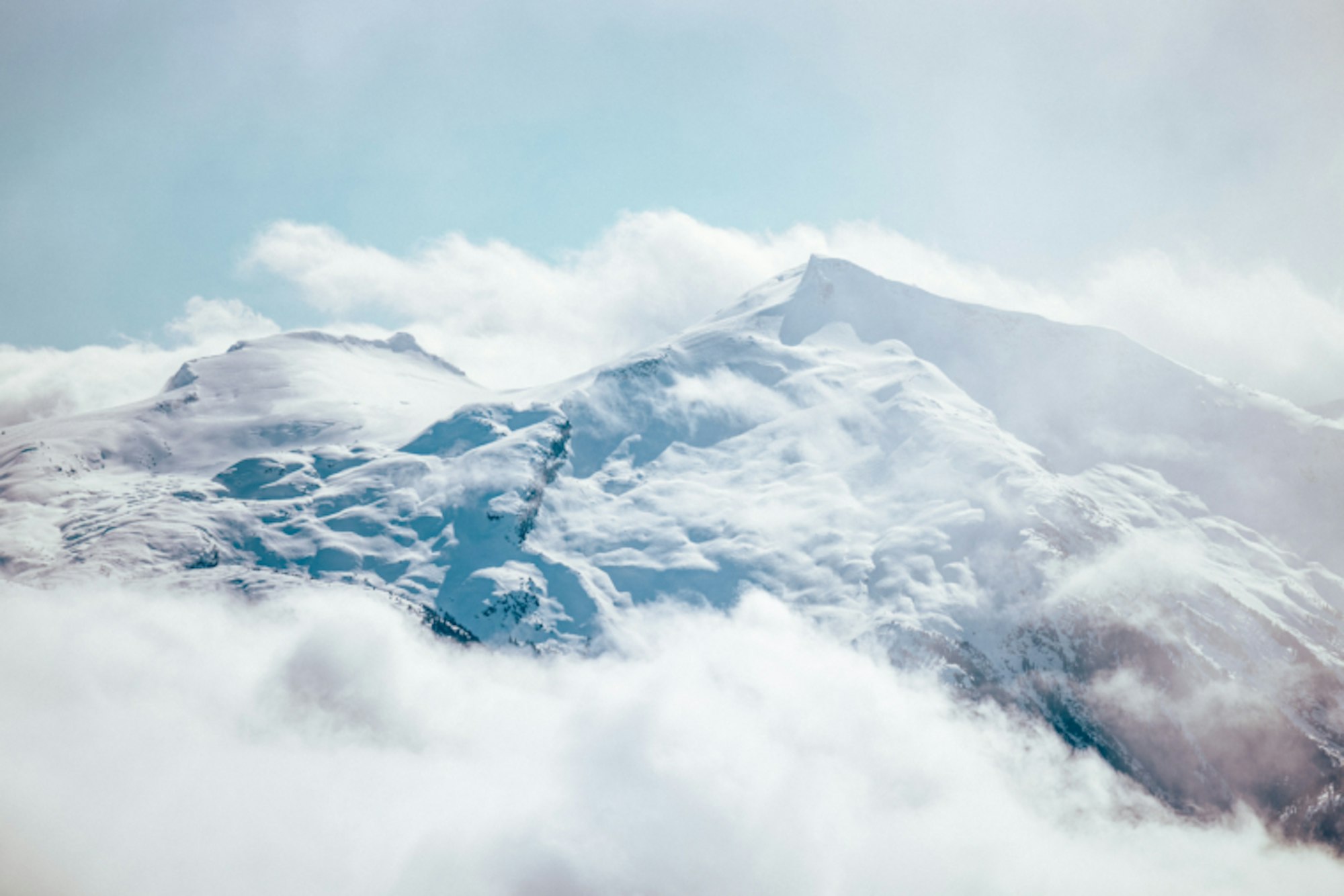
PHOTO: Tyler Ravelle
And the coolest part of it all? I didn’t even really think about the fact that all of these people who influenced the past week for me were mostly women. Long-time Arc’teryx athlete Michelle Parker summed up this feeling for me in talking about her feelings on filming “Continuum”: “When we made this film, I don’t think any of us ever marketed it as an all-female film. We were just so psyched to collaborate with each other and be in the mountains together. I was kind of taken aback when we were premiering it–women in the crowd would come up to me in tears and say they’d never seen anything like it before. We have evolved so much in our industry, and we have a lot more to go, but I think this was a massive step in the right direction.”
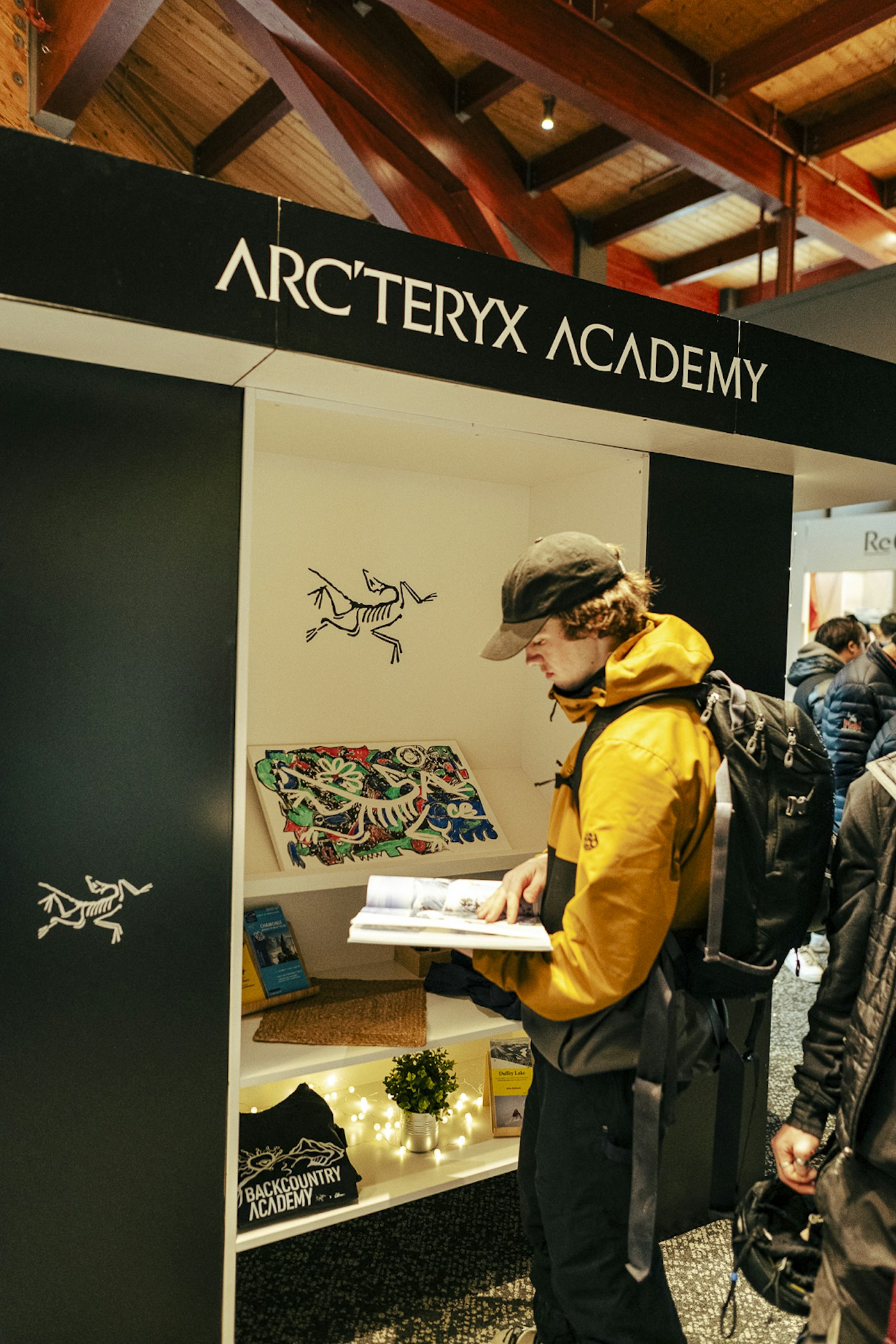
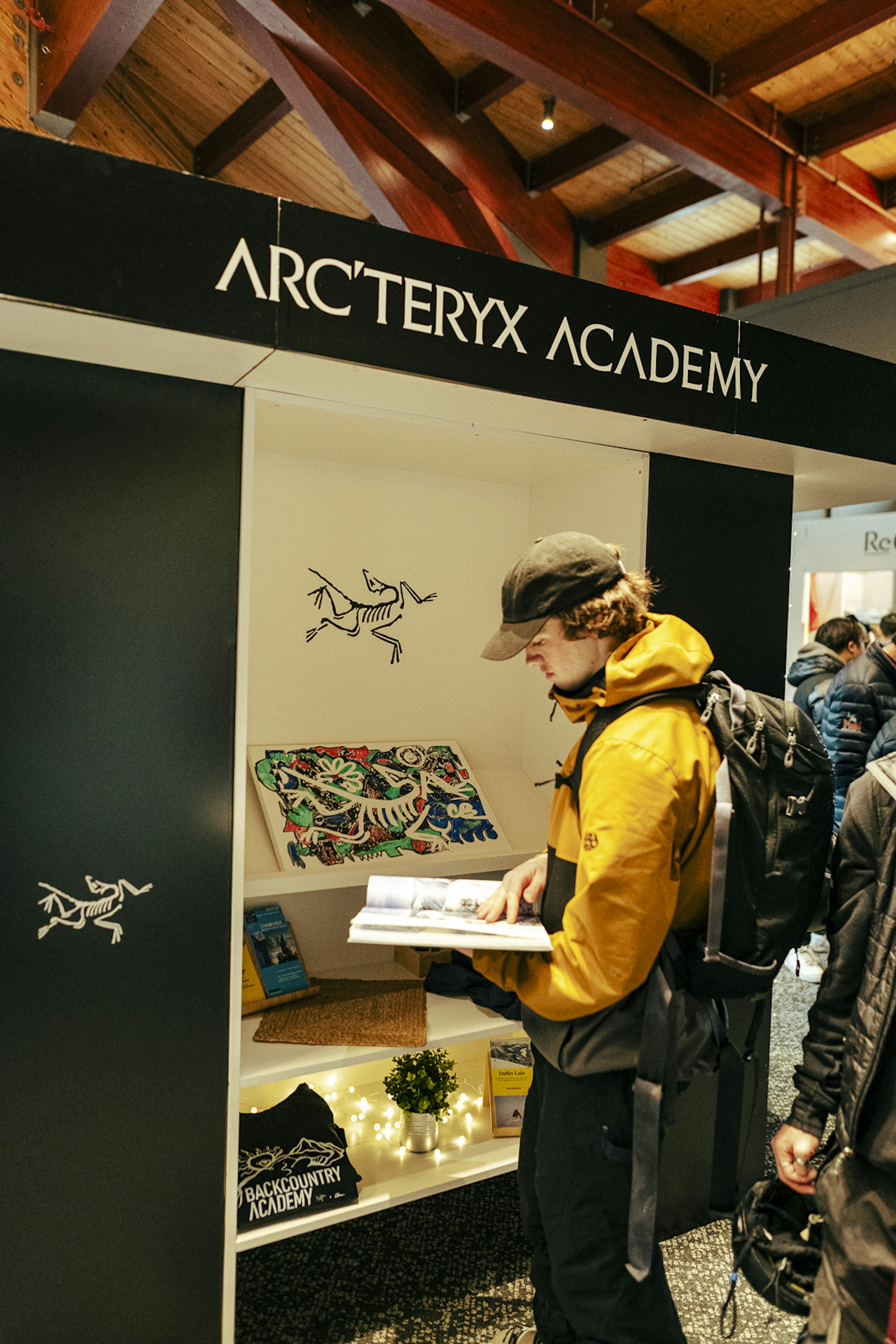
PHOTO: Kyle Gibson
By the time Sunday afternoon rolled around, I was running on low gas, but I stopped by the conference center for one last look at the indigenous art displayed as part of the event. It ties everything together in a way that feels pertinent: the common thread of these mountain communities is far from ordinary. Perhaps that’s why the company we keep and the culture that persists often feel extraordinary.
I skied a lot over the course of the Arc’teryx Backcountry Academy, but I think the thing that sits with me most from the event circles back to this: skiing isn’t really just about skiing.

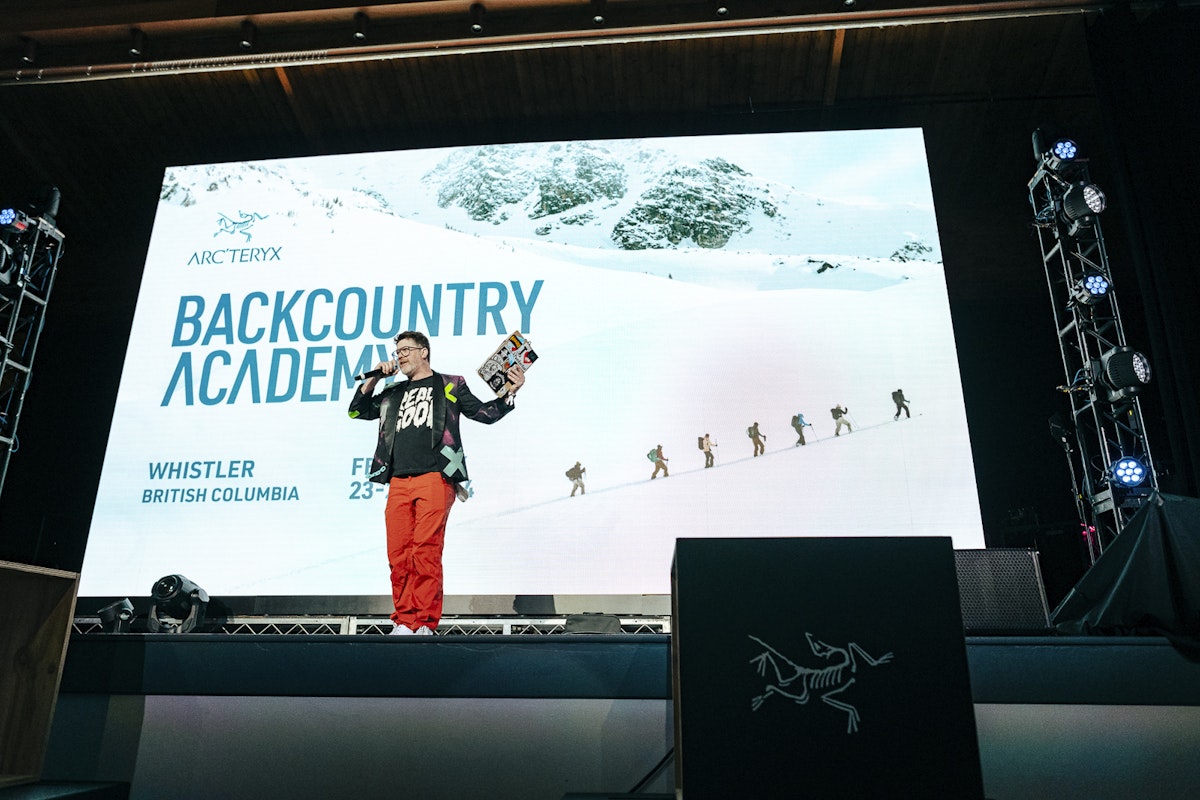

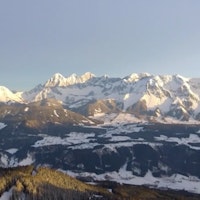
![[GIVEAWAY] Win a 4-Night Karma Campervan Rental and go Ski the Powder Highway](https://www.datocms-assets.com/163516/1767816935-copy-of-dji_0608-1.jpg?w=200&h=200&fit=crop)

![[GIVEAWAY] Win a Legendary Ski Trip with Icelantic's Road to the Rocks](https://www.datocms-assets.com/163516/1765233064-r2r26_freeskier_leaderboard1.jpg?auto=format&w=400&h=300&fit=crop&crop=faces,entropy)


![[GIVEAWAY] Win a 4-Night Karma Campervan Rental and go Ski the Powder Highway](https://www.datocms-assets.com/163516/1767816935-copy-of-dji_0608-1.jpg?auto=format&w=400&h=300&fit=crop&crop=faces,entropy)

